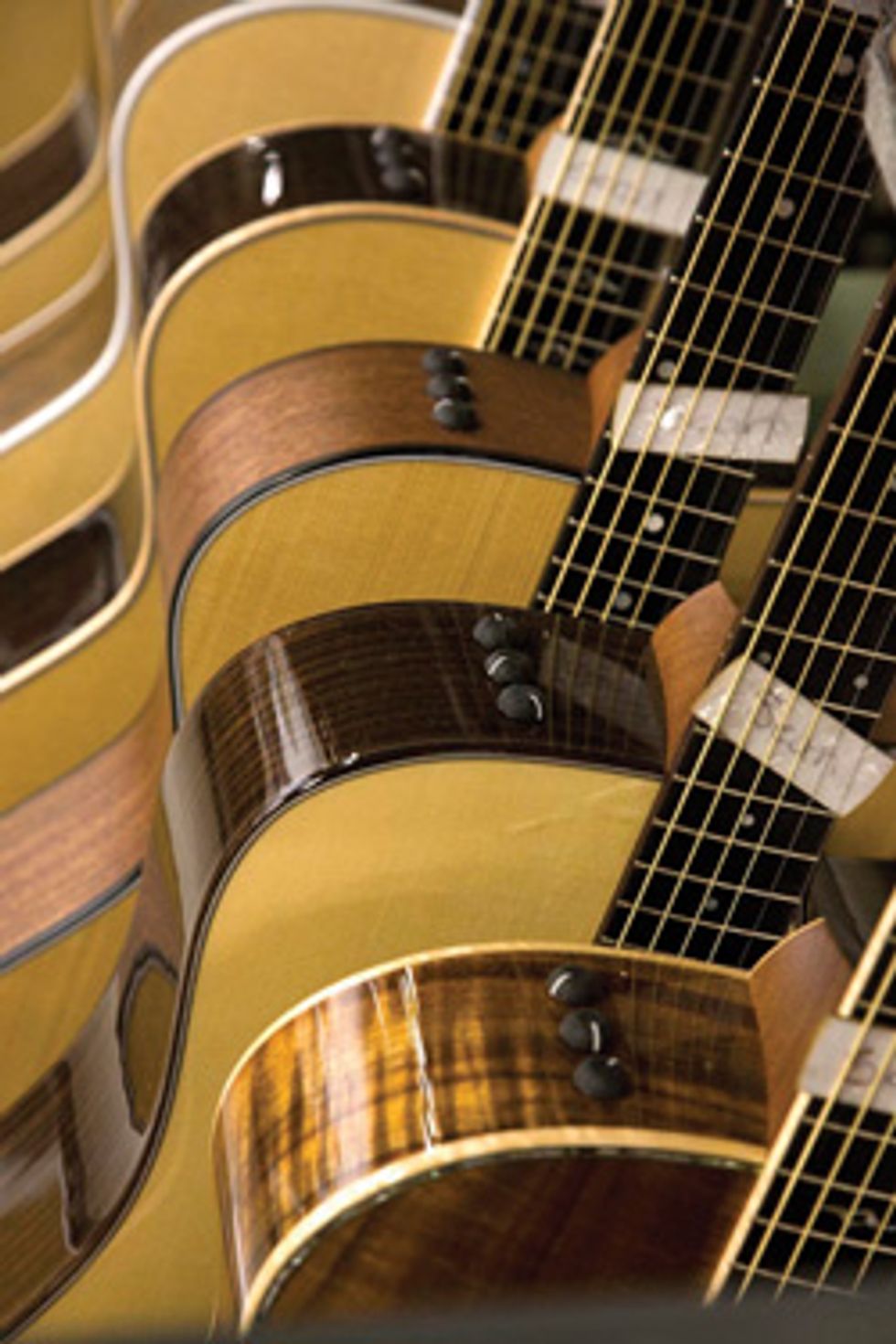How guitar tasting is like food tasting -- and how to keep yourself honest with both
Have you ever watched Gordon Ramsay on the TV show Hell’s Kitchen? That’s the show where he makes people feel like idiots for attempting to be good cooks. The other day I was watching, and he did some very interesting stuff that relates to guitars.
Since a good chef must have a refined sense of taste, he conducted taste tests with his students. First, however, he had to break them down into realizing they are, in fact, idiots, so he made two dishes, each a tartar, one with beef and one with scallops. The students raved, saying it was the best beef and scallops they’d ever tasted, until he revealed that the beef was actually tuna, and the scallops were in fact sea bass.
Next, he blindfolded the poor subjects and served them food, challenging them to identify what they were eating. They failed miserably. The funniest moment involved one student whose favorite food was black truffles; when fed black truffles he winced, saying it was the most disgusting thing he’d ever eaten, and had no idea what it was.
The point is that food is more than blindfolded tests. That’s why we’ve all fed friends something and only revealed what it was after they said they liked it. We know that anticipation changes perception and modifies our likes and dislikes.
The human senses are very acute. We can taste whether our favorite recipe is spot on or slightly off. But that works only when we know what we’re about to taste and are prepared. Take away the anchor points—the anticipation, the preparation, the familiar context—and we’re mostly lost. It’s been proven that after a couple of rounds of tasting, a blindfolded person becomes confused as to whether a drink is 7Up or Pepsi. 
Now, there are some people who have super ears. For instance, my friend Leo Kottke can tell if a guitar is Honduran mahogany or some other kind of mahogany, even if you give him the other kind without him knowing it. He’ll perceive that something is off and ask if this is the same as his other guitars. In a way, that’s just like when you ask your mom if she changed her meatloaf recipe. You know it’s not quite the same, but you don’t know what changed.
Here’s something to remember. The basic shape and design of a guitar contributes about 95 percent or more to its sound. That’s why a Taylor always sounds like a Taylor, and a Martin always sounds like a Martin, no matter how each of us might tweak our guitars. We use wood from the same supplier—heck, from the same tree! It’s true. It’s our design and building processes that make the guitars different.
The last five percent is where we all live, and that’s where you make your thin slices of change. Once you know you like the sound of a particular brand, you know you can’t go wrong within that brand range. The final decisions about woods and shapes are the choices that hone in closer to what you like.
Two things are true. One, if I blindfolded you and put 20 guitars in your hands, you’d eventually become very confused as to which is which, and which is your favorite. Even if you didn’t act confused, you’d pick different guitars as your favorite. But it’s equally true that in the real world, with your eyes open and in your normal, familiar surroundings, you can definitely hear which guitar is your favorite and fall in love with certain combinations of features, such as woods and shapes. In fact, if your guitar is having a bad day tonally, you’ll notice it.
The lesson from this is that your eyes, your favorite music, your favorite memories, your friends and guitar heroes, and what you know about wood and construction techniques all make a difference in how you perceive the sound coming from a guitar. This is part of the mojo of guitars. It’s perfectly valid, even though if you were tested on it, you might fail to prove what you like.
A lot of us like to think that we’re in it just for the sound, that the other features of a guitar don’t matter to us, and that somehow this is a more refined, virtuous way to feel about our connection to guitars. But I’m suggesting that we’re really in it for the overall experience. All the other factors play into the equation and, in turn, influence the sound that we hear. So, feel free to put just as much emphasis on the visual beauty of the wood, or the craftsmanship, or the shape, or the story behind the guitar as you do on the way it sounds when you play it. The fact is, they all contribute to what you ultimately hear, and it’s perfectly valid.
Bob Taylor
Bob Taylor is the co-founder and president of Taylor Guitars. He built his first guitar as a teenager and has since gone on to establish Taylor Guitars as one of the world’s premier acoustic, acoustic/electric and electric guitar manufacturers.


